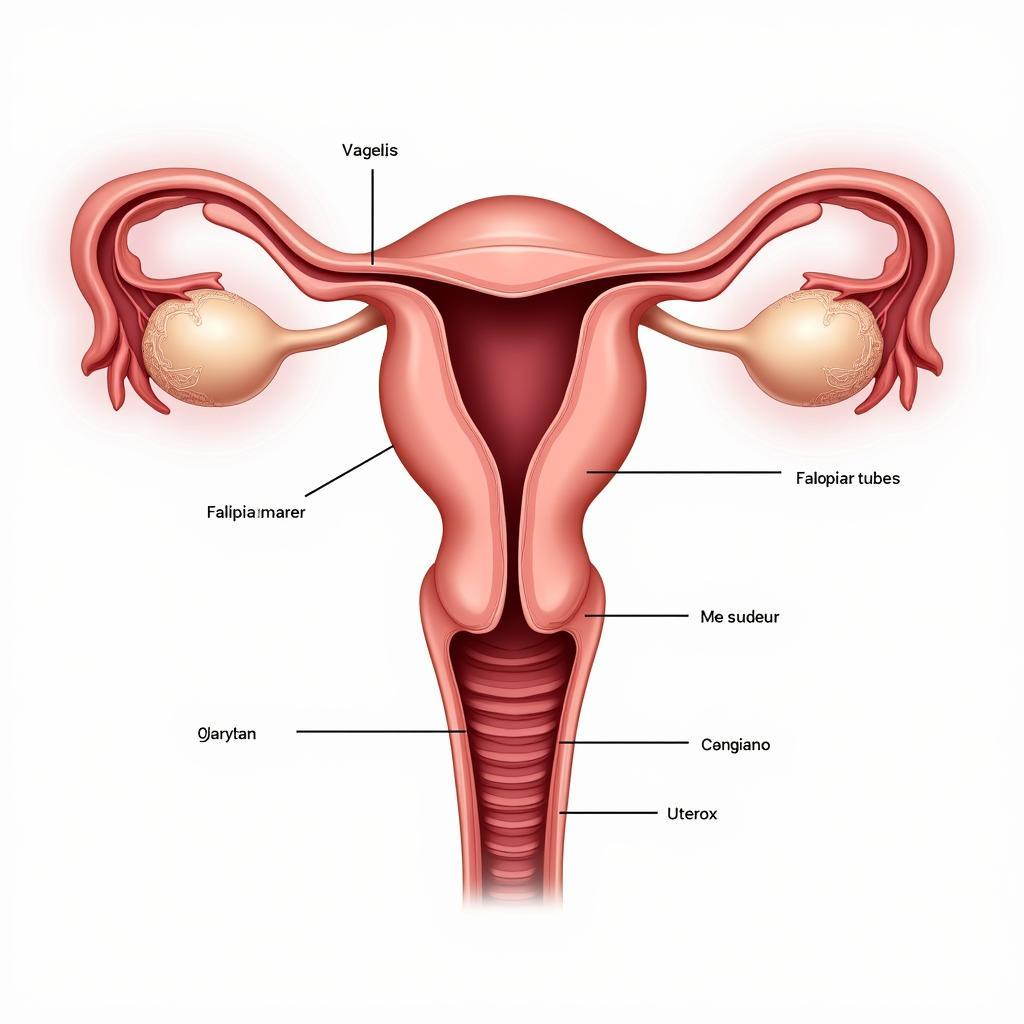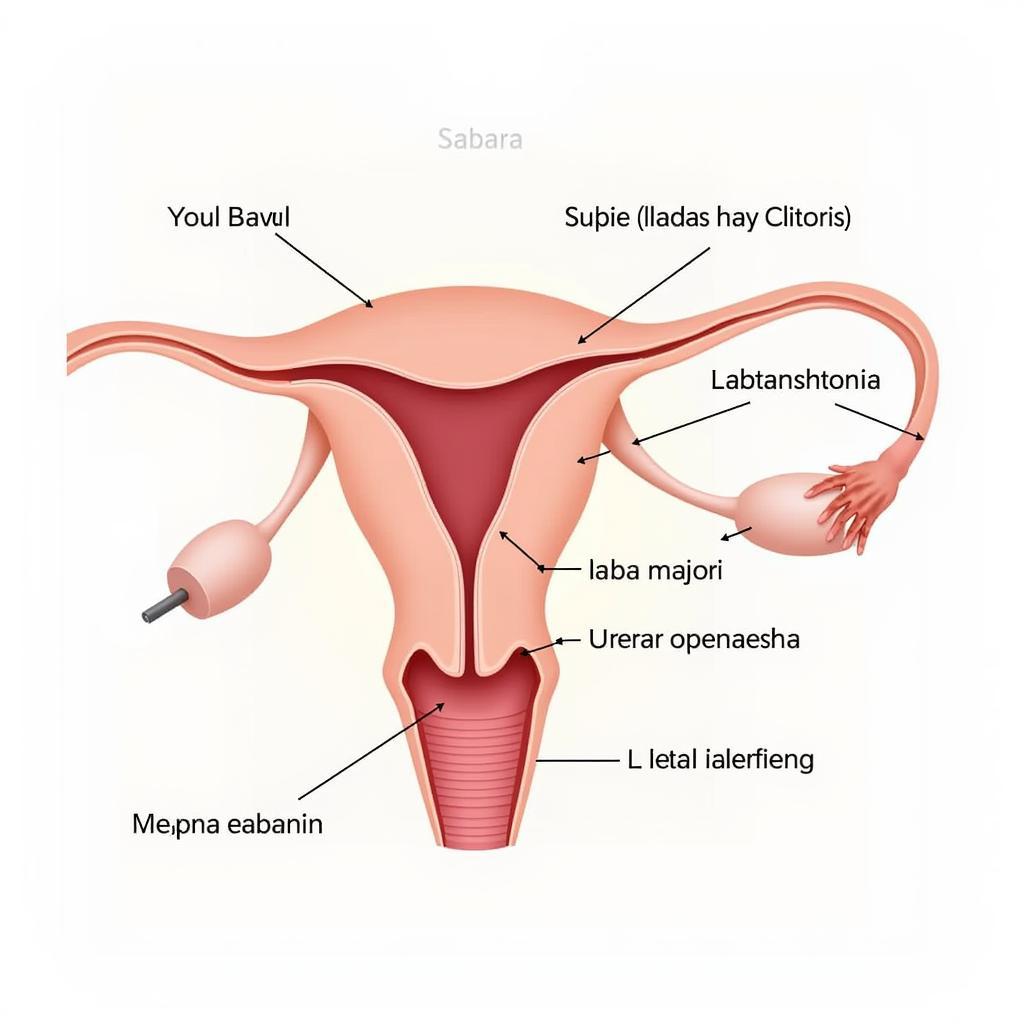Female anatomy encompasses a complex and fascinating system of organs working together to support life, reproduction, and overall well-being. This guide will provide a detailed overview of the female reproductive system, addressing common questions and offering insights into its intricate workings.
The Internal Reproductive Organs: A Closer Look
The internal female reproductive organs are primarily located within the pelvis and play a crucial role in reproduction. These organs include the vagina, cervix, uterus, fallopian tubes, and ovaries. Each component contributes to the intricate process of menstruation, fertilization, and pregnancy.
The vagina is a muscular canal that connects the external genitalia to the cervix. It serves as the birth canal during childbirth and the passageway for menstrual flow. The cervix acts as the gateway to the uterus, protecting it from infection and playing a vital role in childbirth. The uterus, also known as the womb, is where a fertilized egg implants and develops during pregnancy. The fallopian tubes extend from the uterus to the ovaries, providing the pathway for eggs to travel to the uterus. The ovaries are responsible for producing eggs and releasing hormones like estrogen and progesterone.
 Cấu tạo hệ sinh dục nữ
Cấu tạo hệ sinh dục nữ
The External Genitalia: An Overview
The external female genitalia, collectively known as the vulva, includes several structures with distinct functions. These include the labia majora, labia minora, clitoris, and the openings of the vagina and urethra. Understanding the anatomy of the vulva is essential for maintaining hygiene and recognizing potential health concerns. The labia majora and minora are folds of skin that protect the more sensitive structures within the vulva. The clitoris is a highly sensitive organ primarily responsible for sexual pleasure. The urethra, the opening through which urine passes, is also located within the vulva.
 Các bộ phận sinh dục nữ bên ngoài
Các bộ phận sinh dục nữ bên ngoài
The Menstrual Cycle and Hormone Regulation
The menstrual cycle is a complex process driven by hormonal fluctuations. It involves the preparation of the uterus for pregnancy, and if fertilization doesn’t occur, the shedding of the uterine lining through menstruation. This cycle is typically 28 days long but can vary among individuals. Hormones like estrogen and progesterone, produced by the ovaries, play a crucial role in regulating the menstrual cycle and preparing the body for potential pregnancy.
Understanding Menopause
Menopause marks the end of a woman’s reproductive years and is characterized by the cessation of menstruation. It is a natural biological process typically occurring between the ages of 45 and 55. Hormonal changes during menopause can lead to various symptoms, including hot flashes, night sweats, and mood swings.
“Understanding the nuances of female anatomy empowers women to take control of their reproductive health and seek appropriate care when needed.” – Dr. Mai Lan Huong, Gynecologist.
Common Questions about Female Anatomy
What are the different parts of the female reproductive system? The female reproductive system comprises both internal and external organs, each playing a specific role in reproduction and overall health.
How does the menstrual cycle work? The menstrual cycle is a complex process regulated by hormones, preparing the uterus for pregnancy and resulting in menstruation if fertilization doesn’t occur.
What are the common symptoms of menopause? Common symptoms of menopause include hot flashes, night sweats, mood swings, and changes in menstrual patterns.
Conclusion
Understanding female anatomy is crucial for women’s health and well-being. This guide provides a comprehensive overview of the female reproductive system, covering the internal and external organs, the menstrual cycle, and menopause. By understanding these intricate processes, women can make informed decisions about their reproductive health and seek appropriate care when needed.
“Regular check-ups and open communication with healthcare professionals are essential for maintaining optimal reproductive health.” – Dr. Nguyen Thi Thu Huong, Obstetrician.
Frequently Asked Questions
- What are the main functions of the ovaries?
- What is the role of the fallopian tubes in fertilization?
- How does the cervix change during pregnancy?
- What are some common causes of menstrual irregularities?
- What are the treatment options for menopausal symptoms?
- What are the common signs of vaginal infections?
- How often should women have gynecological check-ups?
Khi cần hỗ trợ hãy liên hệ Số Điện Thoại: 0909802228, Email: doibongda@gmail.com Hoặc đến địa chỉ: 101 Đ. Lý Chiêu Hoàng, Phường 10, Quận 6, Hồ Chí Minh, Việt Nam. Chúng tôi có đội ngũ chăm sóc khách hàng 24/7.